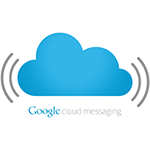Last year, at Google I/O 2013, some major new features and improvements were announced for Google Cloud Messaging (GCM) -the replacement for Cloud to Device Messaging (C2DM). A couple of the new bits were even featured during the keynote, particularly notification syncing, which the audience loved. The one thing most people don't know is that most of the coolest things announced that year were marked as beta and locked behind an application process. Plenty of developers were accepted, but it certainly wasn't available to everybody. This year, the restrictions are dropping and all developers are allowed to make full use of GCM.
[EMBED_YT]https://www.youtube.com/watch?v=aJNzuxhZSxQ
[/EMBED_YT]
Achieving more with Mobile Cloud [Google I/O 2014]
The announcement came during a session titled "Achieving more with Mobile Cloud," presented by Francesco Nerieri. He also lead similar presentations for GCM in 2012 and 2013. This time, the session was intended to feature the launch of GCM for the Chrome web browser on the desktop, but it turned into a series of announcements about new features rolling out to both Android and Chrome.
Android has been enjoying extensive push messaging capabilities for quite some time, but the Chrome browser only got started a few months ago in a limited test. The session opened to declare that the desktop browser is finally stepping up to the big leagues with an essentially identical feature set to GCM on Android. This means it will be easy for developers to enable applications on a device or web browser to fluidly communicate between each other, despite location, network type, and even environmental conditions.
While it's exciting to see GCM moving to more platforms, we're also gaining a few new APIs that enable richer and more intelligent messaging options. Nerieri announced 4 new features that are already live in Google Cloud Messaging:
- User Notifications
- Upstream Messaging
- Cloud Connection Server
- Delivery Receipt
Some of these are completely brand new, while others are only first reaching Chrome for desktop or coming out of invite-only status. He also described a new feature called Network Manager which will be rolling out to Android and Chrome in the near future.
Finally, new APIs for Google Cloud Save were introduced. Cloud Save enables apps to store small amounts of data and keep it synced across devices via GCM. It supports offline storage and attaches to a Google account, so users don't have to worry about losing passwords or data, and sign-in is built right in.
Except for Google Cloud Save, all of the new features and services are free and only limited by the quantity of messages that can be sent in a given period of time (which can be increased with requests to Google). The terms of Cloud Save have not yet been finalized, so we'll try to post updates when more information becomes available.
The breadth of features and capabilities is pretty massive, and hardly anything is repeated between the 2013 and 2014 sessions, so it might be worth taking a look at the video from last year, as well.
[EMBED_YT]https://www.youtube.com/watch?v=y76rjidm8cU
[/EMBED_YT]
Google Cloud Messaging [Google I/O 2013]
For Android developers, take a look at the GCM for Android developer documents, or swing by the Google Chrome docs for the desktop counterpart. And finally, for a quick introduction on how to setup some of the most popular features of Google Cloud Messaging on Android, take a look at the DevBytes video that also came out last week.
[EMBED_YT]https://www.youtube.com/watch?v=owhf42SZadk
[/EMBED_YT]
Thanks, Andrew Jones-McGuire

